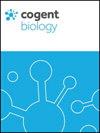The effects of oral calcium on the prevention of moderate to severe ovarian hyperstimulation syndrome in high-risk patients: A placebo-controlled study
引用次数: 2
Abstract
Abstract Ovarian Hyperstimulation Syndrome (OHSS) is a serious complication of Assisted Reproductive Technology (ART). Some studies show that intravenous calcium infusion decreases the risk of OHSS in high-risk patients. Some life-threatening complications may occur following intravenous calcium gluconate infusion, but oral calcium carbonate is a cheap and easy-to-use medication with no/minor side-effects. The present clinical trial was therefore designed to identify the role of oral calcium in OHSS prevention in high-risk patients. A total of 99 patients who had received an antagonist protocol for ovarian stimulation in their ART cycles and were at risk of OHSS were recruited for the study. The patients were allocated into two groups to receive either 500-mg BID calcium carbonate tablets or placebo tablets from their puncture date for five days. The findings showed no significant differences in oocyte and grade A, B and C embryo counts between the two groups. Moreover, the clinical pregnancy rate and the frequency of OHSS symptoms were not significantly different between the two groups. The frequencies of mild, moderate and severe OHSS were not significantly different between the two groups either. Since oral calcium is an easy-to-use method with limited side-effects, we recommend further studies to examine its effects on OHSS prevention in high-risk patients.口服钙对高危患者中重度卵巢过度刺激综合征的预防作用:一项安慰剂对照研究
卵巢过度刺激综合征(OHSS)是辅助生殖技术(ART)的严重并发症。有研究表明,静脉输钙可降低高危患者OHSS的发生风险。静脉输注葡萄糖酸钙后可能会出现一些危及生命的并发症,但口服碳酸钙是一种便宜且易于使用的药物,没有/轻微的副作用。因此,本临床试验旨在确定口服钙在高危患者预防OHSS中的作用。研究共招募了99名在ART周期中接受过卵巢刺激拮抗剂方案并有OHSS风险的患者。患者被分为两组,从穿刺日期开始服用500毫克BID碳酸钙片或安慰剂片,为期5天。结果显示,两组之间的卵母细胞和A、B、C级胚胎计数无显著差异。两组临床妊娠率及OHSS症状出现频率差异无统计学意义。轻、中、重度OHSS发生率在两组间也无显著差异。由于口服补钙是一种易于使用且副作用有限的方法,我们建议进一步研究其对高危患者OHSS的预防作用。
本文章由计算机程序翻译,如有差异,请以英文原文为准。
求助全文
约1分钟内获得全文
求助全文

 求助内容:
求助内容: 应助结果提醒方式:
应助结果提醒方式:


